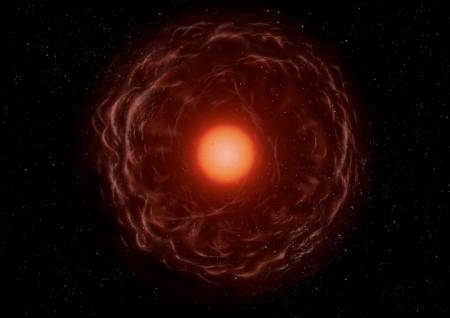nutranurse
Unlikeliest of Slash Fics
- Joined
- Jan 30, 2009
- Messages
- 2,077
Update III: The Brightest Star


The galaxy witnessed its first true tragic anomaly with the birth and death of Falia (1707), an immense bright-burning star a few quadrants away from the jewel-systems of Madarak and Chrystosen. From the very moment Falia came into being it burned hotter and brighter than any known star, but it did not take long for it to burn off its supply of energy and be forced onto its last limping limb. Luckily all that existed in the Falia system was the gas giant Falia I. Not all that far from Falia the blessed systems of Madarak (1908) and Chrystosen (2007) showed signs of their own brilliance catching up with them as they aged into more mature stars. Elsewhere Noctura Alpha (1613) did just the same.
A handful of new stars were born in this phase of the galaxy's evolution. Lemin (1317) emerged from the cosmic primordial soup with two sizable worlds in tow: one a pleasant enough green world full of promise, the other a hellish wasteland of fire. Near to Maqrok, Yosan (0611) was born and soon thereafter a habitable planet just on the outskirts of Yosan's 'sweet-spot', a less lucky rocky planet choked by its noxious atmosphere, and a barren wasteland, which was oddly enough the most interesting contribution Yosan made to the galaxy: this planet was the first cold-world to form. Whether or not Yosan's distant third child was made up of ice, fully or partially, could not be ascertained. Lastly Creatorus (1819) grew from a small light into a bright star, though perhaps its light was too bright as its harmful rays totally enveloped its first two worlds and rendered them impotent-by-fire.
The already existing stars enjoyed a flurry of creation. Two nebulae (0421)(0521) began to occlude Nin Frauling's beautiful blue world in their multi-colored darkness. A great number of asteroids amassed in Eno (1107) to shield the system's new prime jovian and much smaller cold-world. Barmile (1216) had a fit of unfruitful activity, resulting in the creation of a gas giant and barren fire-world of similar sizes. Megapantheon (1214) tried its hand at creation, but was only able to produce an unremarkable brown world. Beren (0808) filled out the rest of its system with a small gas giant, a much larger, but barely habitable planet, and a small, barren world too close to the star. The twin stars Kraton-Kamulon (2309) brought forth twin planets: a green garden-world and its uglier, rockier brother. Surnamir (0523) was the last star to do anything of note, and it completed its system with two small planets: one gas, the a cold, lonely world.
A rogue asteroid system (2108) came into being near Chrystosen, perhaps heralding the beginning of some new system.
This phase of galactic development came to a close when two mighty comets streaked through space and heralded that a new, more volatile era had begun. In Ender (0616) a comet smashed into the moon of the systems largest habitable planet, causing both the moon and comet to break apart and form several small moons. The Varynx-system (2209) proved to be much luckier, as the comet intended for it flew harmlessly into the star.
Player GC¤:
Blaze Injun: 41GC¤ (20+18+3)
Eltain: 42GC¤ (20+16+6)
Tecknojock: 36GC¤ (20+15+1)
Gem Hound: 43GC¤ (20+20+3)
General Olaf: 56GC¤ (20+18+18)
Tambien: 26GC¤ (20+5+1)
Terrance888: 53GC¤ (20+11+22)
Haseri: 47GC¤ (20+14+13)
thomas.berubeg: 67GC¤ (20+13+24)
SouthernKing: 43GC¤ (20+16+7)
nutranurse: 36GC¤ (20+14+2)
Double A: 59GC¤ (20+2+37)
TerrisH: 32GC¤ (20+1+11)
mayor: 35GC¤ (20+11+4)
theDright: 56GC¤ (20+6+30)
hbar: 69GC¤ (20+14+35) 1 Kudos
spaceman98: 100GC¤
 (20+16+64) 1 Kudos
(20+16+64) 1 Kudos--------------------------------------------------------------------
Rule Changes/Additions
Stars
When stars are formed they have a 1-15 chance of being a Blue Star, a 16-30 chance of being a Red Star, and a 31-100 chance of being a Yellow Star.
Blue Stars are larger and burn brighter. Whenever an uninhabitable planet is formed in a Blue Star System there is a 1-25 chance the uninhabitable planet is a cold planet and a 26-100 chance the uninhabitable planet is a hot planet.
Red Stars are smaller and dimmer. Whenever an uninhabitable planet is formed in a Red Star System there is a 1-25 chance the uninhabitable planet is a hot planet and a 26-100 chance the uninhabitable planet is a cold planet.
Yellow Stars are the normal stars are neither particularly bright or sizable. Whenever an uninhabitable planet is formed in a Yellow Star System there is a 1-50 chance the uninhabitable planet is a hot planet and a 51-100 chance the uninhabitable planet is a cold planet.
Terrestrial Planets
There are new rates for determining the habitability-level of terrestrial planets: Uninhabitable Planets 1-75; Somewhat Habitable Planets 76-95; Habitable Planets 96-99; Gaian Planet 100.
Yes, I recognize that there is now a really low chance to form "good" habitable worlds. This is the way it is supposed to be.
There are now two kinds of Uninhabitable Planets: Hot & Cold. Hot Planets are fiery worlds scorched by their local star, whereas Cold Planets are frigid, wind-blasted wastelands on the outer-limits of their system. The distinction, at the moment, is just for flavor, but it will not remain this way in future epochs.

Cause A Red Giant to Supernova/Become A White Dwarf
The GalCred¤ cost for this has been reduced from 75GC¤ to 60GC¤, as it already is a considerable investment to get a star to become a Red Giant.
*Thanks to Gem Hound for contributions to these rules




